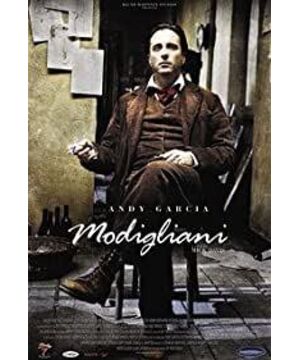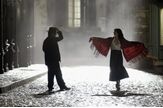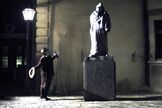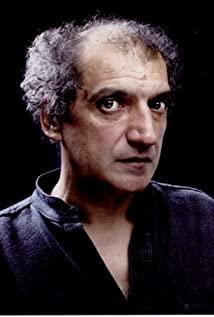It cannot be denied that Impressionism, Post-Impressionism, Fauvism, Cubism, Expressionism, Abstraction, etc., all art categories that originated after the twentieth century are separated from the influence of Romanticism, but at the same time they are also a kind of inheritance of Romanticism. and extension. Modigliani's paintings had a certain progressive retro sense for the Fauvism at the time, headed by Matisse, and the Cubism, later famous for Picasso. He no longer regards oil paintings as an appendix of photographs, but is precisely between the striking rendering of colors by Fauvism and the painting method of Cubism that reduces the three-dimensional picture to a flat, two-dimensional picture, more precisely, It is a return to the original romanticism of the 18th century with a special effect of content and color, giving a richness to content rather than just form.
The description of Modigliani in the movie "Mo" also begins with romanticism. Although Modigliani has an American face at the first sight at the beginning, but in the so-called "dancing like Balzac". At the same time, the director wanted to tell us preconceivedly that Modigliani inherited more romantic genes than Picasso, who was "fat" and could only sit and smoke.
We all know that Picasso had countless women in his life, but a Spaniard who was too full of affairs seemed to make conservative Americans even more uncomfortable. In contrast, the Italian, who only had affection for two women, was regarded as the heirloom of the personal genius of the Renaissance. The emergence of Rousseau after the Renaissance sowed the seeds of romanticism in this world, and under the misunderstanding of the United States, an immigrant country for more than two hundred years, the word "romantic" seems to be given a moral standard.
While expounding on Modigliani's romance, the director also portrayed his decadence in a large-scale film. Compared with Van Gogh's mental illness, Picasso's rotten nightlife and Dali's extreme egoism, if you want to depict a genius, it is necessary to tell the audience how he completed his immortal works under the condition of ruining his body and life. Both alcoholism and drug use have become the labels used to portray each rebel character in the film. The influence of "Trainspotting" and "A Clockwork Orange" in the history of modern film gives us the best explanation for these two things, so Once again we understand that only alcohol and drug use and even sex are the source of artistic creation. This also coincides with many themes of Dionysus and original sin in classical romanticism.
I can't imagine if "Mo" was made into realistic films such as "The Bicycle Thief" and "Roman Eleven", would this beautiful love of Modigliani still move us? For this reason, the director applied the classic Hollywood model and dressed Picasso, who had no relationship with Modigliani, as an artistic nouveau riche, smoking a cigar, soaking a woman, and even becoming a man at the end of the film. Depressed "poor people". Modigliani was transformed into a victor who was materially poor but spiritually stronger than Picasso and had a personal moral charisma. When Picasso was about nineteen years old and one of his painter friends ran from Spain to Paris to start his impoverished and rotten "Blue Age" early creative life, how could we have imagined that we would see such a film in this film? Picasso?
In this kind of confrontation between positive and negative, the director full of romantic feelings squeezed the elusive emotional entanglement, almost artificial artistic creation and heroic resistance against powerful forces in this artist-style film, making an already more acceptable film. At present, audiences of stream-of-consciousness films such as Robert's "Wild Strawberry" and realistic genre films such as "Four Hundred Blows" feel that the film is a step backwards in the hands of this director. He helped Modigliani to imagine the old-fashioned way of imagining a mental image of his own child, and reminded me of the "A Beautiful Mind", which also has love and also has phantoms, but the Nobel Prize winner Nash's The story is about love, academics, and illness. "Mo" has obvious deficiencies in the description of its creation. The film has some implicit connection with romanticism in the narrative technique. The director hopes to use the story of an artist who wants to break the secular precepts, or some kind of rebellious romantic spirit that he has inherently, from another perspective. The value of the spirit of personal freedom was reflected in the contest between Riani and Picasso, and the mainstream painting schools at that time. It's just that this distorted romantic approach is a lot naive compared to the French New Wave and German New Films, as well as many Italian films. Some people say that all American movies except Woody Allen are bad movies. This sentence should be true in literary films.
For the director and Modigliani, the romantic mood has become their most appropriate interpretation of the genre itself. If there is no so-called "evil" Picasso in it, it may give the same weight to Modigliani's creation and feelings We may not watch this movie like a romantic movie, and think more about Modi's painting ideas and techniques, so that we can give us a better idea of the depth and breadth of content. Impressed by fictional stories.
View more about Modigliani reviews











